Do You Peel Zucchini Before Cooking
Zucchini noodles or zoodles — it doesn't matter what you call them. This ingenious, low-carb alternative to pasta is a great way to add more vegetables to your diet.
Zucchini is chock full of fiber, vitamin C, vitamin A and vitamin K, Abbie Gellman, chef and registered dietitian at the Institute of Culinary Education, told TODAY Food. And with only 19 calories and 3.5 grams of net carbs per cup, you can feel great about eating it to your heart's content.
Eating zucchini in noodle form can also be a textural delight — but only if you do it right. If prepared incorrectly, it can be a slimy, soggy mess. Zucchini noodles are incredibly easy to make, and the more you try to complicate them, the higher chance you'll run into issues. Here's our complete zoodle guide, including dos and don'ts, various cooking methods and sauce ideas.
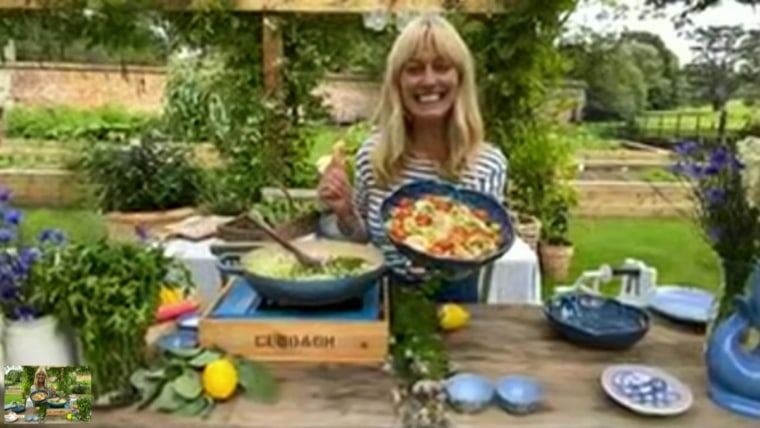
How to shop for zucchini
You can use zucchini, yellow squash or a combination — there's no real difference in how your noodles will turn out. Look for zucchini or squash that is firm to the touch and has slightly glossy skin. Avoid ones that are starting to soften, get flexible or turn brown.
How to make zoodles
There are multiple ways to make zucchini noodles — with and without a spiralizer. Regardless of the method you choose, Gellman recommended keeping the peel.
"You have all the fiber in that peel," she said, "Plus that beautiful color." You'll also end up with some little zucchini nubs, which you can chop up and use in other dishes over the following couple of days.
Tabletop spiralizer
It's fast and easy to use, and, if you think you'll make vegetable noodles often or for your whole family, it's worth the $25 investment. It comes with multiple blades that allow you to vary the thickness of your noodles, which is beneficial when you work with different vegetables. You can make noodles from carrots, sweet potatoes, turnips, kohlrabi, cucumbers, broccoli stalks and more.
To use, anchor the spiralizer to the countertop and slide your desired blade into place. Cut the ends off of the zucchini. If the zucchini is big, you may want to cut it in half for easier handling. Put one side of the zucchini flat against the blade, and the other side against the prongs. Turn the crank — and voila! You've got zucchini noodles. If you've got crazy long noodles, you can use a pair of clean kitchen scissors to cut them into more manageable pieces.
Handheld spiralizers
These are great if you don't have much kitchen space because they can be stored in your kitchen drawer. To use, put one end of your trimmed zucchini against the blade. Turn the zucchini clockwise while putting pressure on it.
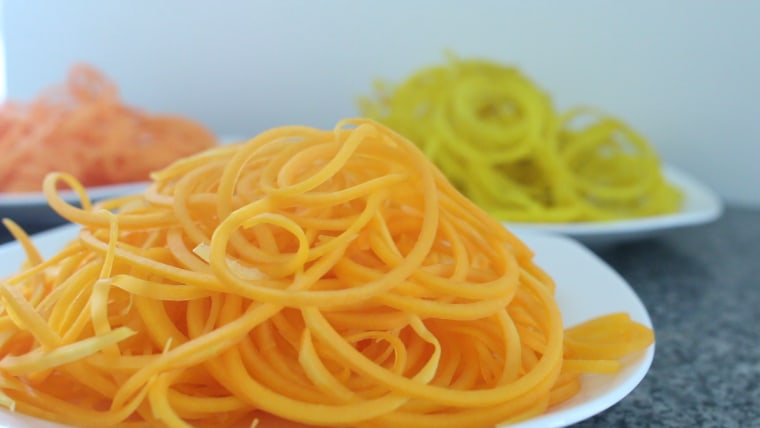
Mandoline
Set the mandoline to 1/8 inch and have the julienne blades face up. Cut off the ends and run the zucchini over the mandoline — but please be extra careful not to slice your hand!
Vegetable peeler
Your everyday vegetable peeler will result in wide, ribbon-like pieces of zucchini. Use the peeler as you normally would, with smooth strokes from one end of the zucchini to the other. The more pressure you use, the thicker your ribbons will be. You can keep these ribbons wide for a more pappardelle-like zucchini noodle or stack them on top of each other and slice them into thinner noodles.
How to cook zoodles
Zucchini noodles are a gift for those days you don't want to spend a ton of time in the kitchen because they cook quickly. In fact, I prefer to eat them raw with homemade pesto for maximum crunch. You can use the raw noodles as a base for salads or even poke. Gellman suggested serving them up cold with a peanut sauce or tahini-yogurt sauce, or adding them to hot soup. You can also heat up sauce, like marinara, and add the noodles to the sauce just before serving, letting the heat from the sauce warm them. For picky eaters, Gellman recommended mixing half spaghetti and half zucchini noodles, so you get the added benefit of vegetables with the texture of pasta.
If you prefer to cook your noodles, here are some ways to do it.
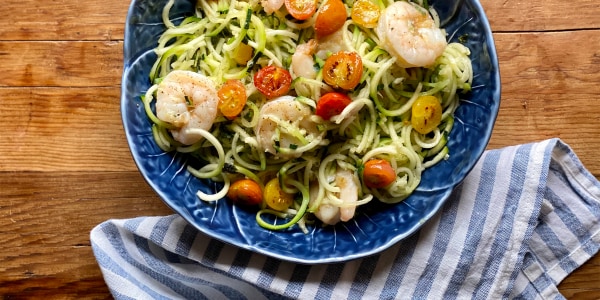
Clodagh McKenna
Sauteing
Toss the zucchini noodles in some oil, and depending on the final dish, you can add spices like garlic powder, an Italian spice mix, crushed red pepper or shichimi togarashi. Heat a nonstick skillet to medium. Add zucchini noodles. Toss with tongs and let the zucchini cook for just a minute or two. Remove from heat and add to sauce or add some salt and eat as is. Note: Don't salt the zucchini before you saute it; the noodles will release more water and they'll end up limp. (See more on that below.)
Roasting
Preheat your oven to 400 F. Place noodles in a bowl. Drizzle with oil, sprinkle with salt and any desired spices and toss with your hands. Line a baking sheet with foil or parchment paper (I like parchment paper because the noodles are less likely to stick) and put in the oven for 10 to 12 minutes, until you see the noodles start to brown a little. Remove and enjoy as is or add a little sauce.
Microwaving
Place your zucchini noodles in a microwave-safe bowl. Add about 2 teaspoons of water. Cover the bowl with a damp paper towel. Cook for 1½ minutes. Add to sauce or add in seasonings. This method is super easy and retains the crunch of the zucchini.
Blanching
Bring a pot of water to a boil. Add about 1 tablespoon of salt. Add zucchini noodles and cook for just 2 minutes. Drain the noodles and add to sauce. Note: This method yielded the limpest noodles, so I wouldn't suggest it.
How to avoid soggy, watery zoodles
Zucchini is 95% water, so it's easy for your final product to end up a watery mess. "So many people complain about how zucchini noodles get mushy and watery," said Gellman. There are a few ways you can prevent this.
Remove moisture from the get-go
Pat down the zucchini noodles with paper towels to remove excess moisture before cooking or dressing them.
Don't let your zoodles sit in salt
Countless recipes suggest that you let your zucchini sit in salt before cooking, like many do with eggplant, in order to get water out of them. But Gellman said this can actually just cause the water to leach out into your sauce, so she advised not doing this.
Don't overcook your zoodles
Zucchini noodles benefit from raw or quick-cooking preparations. Cooking them longer won't make them any crunchier — it'll just do the opposite. "They're not supposed to be mushy, but zucchini is also never going to be al dente like pasta," explained Gellman. "It's a thin line between raw and overcooked."
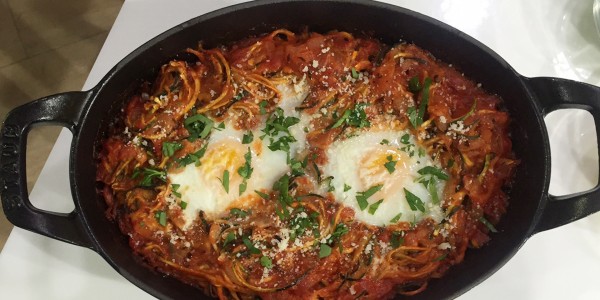
TODAY
Use a 70:30 zoodle-to-sauce ratio
Ali Maffucci, spiralizing aficionado, writes in her book "Inspiralized" that watery noodles are the No. 1 issue her readers face. She suggests going heavier on the noodles and lighter on the sauce. Additionally, she suggests reducing your sauce down so it's thick, rather than runny, before adding noodles. Use tongs to add your zucchini noodles to sauce — don't just pour the noodles out of the saute pan or add the sauce to the saute pan, as there will be excess liquid drained out from the zucchini.
How to make zoodles ahead of time
Zucchini noodles are best fresh, but if you want to make them ahead, place them in a paper towel-lined storage container and keep them in the fridge for no more than two days.
Where to buy zoodles
If you don't want to make your own zucchini noodles, you can often find them pre-spiralized at many grocery stores in the produce aisle alongside other pre-cut vegetables. If you go this route, buy them the day of or a day before you're going to eat them — otherwise you risk them becoming slimy and unappetizing.
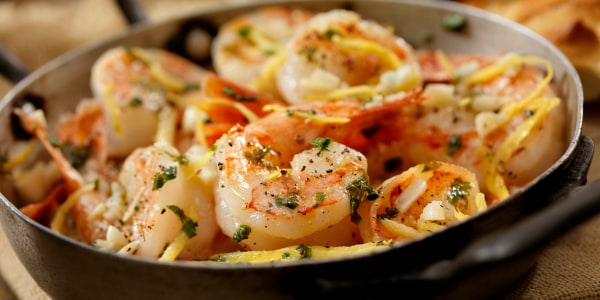
Getty Images stock
How to freeze zoodles
I strongly advise against doing this, as the texture of the noodles will not be the same once thawed. But if you must, store them in vacuum-sealed bags or freezer bags, being sure to remove as much air as possible. You can cook them straight from frozen by sauteing them in a hot pan.
Now, go forth and make oodles of zoodles!
Do You Peel Zucchini Before Cooking
Source: https://www.today.com/food/zoodles-101-how-make-cook-zucchini-noodles-t191607
Posted by: morganfacter.blogspot.com

0 Response to "Do You Peel Zucchini Before Cooking"
Post a Comment